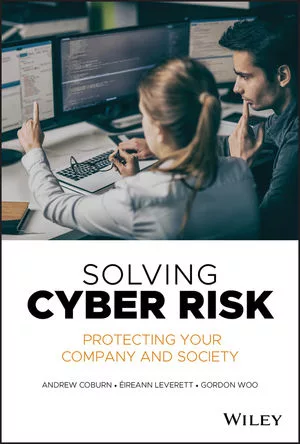How to Decide on Your Company’s IT Security Budget

Global spending on information security products and services has been on the rise for years. According to Gartner, budgets have grown from $114 billion in 2018 to a forecasted growth of more than $124 billion in 2019. IT security leaders in enterprises agree, with 72 percent saying that their budget will increase in 2020. With more money being allocated for information security, it’s interesting to see how these investments are actually shaped.
From my experience, there are two ways to decide about the future. One option is to rely on your intuition and previous experience or simply follow prior protocols. The other is to analyze your unique situation, break it down into small details and try to calculate the probability of these details changing in the near future.
With this in mind, let's take a deeper look at how different companies plan their IT security spending and what we can learn from these two approaches.
The Conventional Approach to Budgeting
The most typical approach to security budgeting is often based on instant needs or on previous experience. This is especially relevant for growing companies that need to be able to quickly equip businesses with the minimum necessary cybersecurity measures and tools to focus on growth.
In organizations at this stage, budget planning most often happens according to the principle of inheritance, whereby the current budget level is maintained for several cycles with minimum changes. There is no practice of setting strategic IT security goals or assessing specific risks, and the money is spent on emerging needs with ad hoc support.
This approach may work well unless sudden and unaccounted business needs emerge, for example, a decision to increase the digital side of the business, implement a cloud-based service for CRM or accounting or open a new branch of an office. All these business decisions mean that the IT security budget, as well as personnel, will be rapidly allocated to fix the closest security gap while previously scheduled tasks and deployments get delayed and piled up for later.
As a result of this, the actual spending on security in these organizations may increase dramatically as whenever something unexpected happens, the organization will need to solve it as quickly as possible, no matter the cost. At the same time, larger organizations with a more mature approach to risk management may end up with a smaller proportion of money spent on information security.
A Risk-Based Approach
It’s not surprising that in 2019, risk management expertise is cited among the top three skills for Information Security Chiefs. In mature enterprises, risk assessment is at the core of business processes, and IT security is no different.
More mature organizations do not try to fix as many gaps as possible. First, they look at critical business risks, whether it’s downtime, service availability, a destroyed reputation, lost business opportunities or any kind of direct monetary losses. For the businesses with this mindset, cybersecurity isn’t a habit or a ‘necessary evil’ investment instigated by scary headlines, it’s reasonable and based on risk calculation.
Cyber threats do not discriminate against industry or size, and all organizations are likely to face specific types of cybersecurity risks. For an ecommerce firm with most of its business in digital, there’s a good chance that DDoS attacks on its web resources would cause massive damage, both monetary and reputational. Meanwhile, financial and government organizations will face significant penalties and fines from regulators should their systems get breached in an advanced cyberattack, so their budgets should focus here. Additionally, software developers and service providers can even be a target themselves, or a step in a supply chain attack against their customers. In other words, there are almost as many threat models as there are types of business, each with a specific and ever-changing set of risks.
Since there is always a certain probability of risk, IT security expertise is becoming a very important part of the risk assessment process. Experts, including external ones, are invited to evaluate possibilities and add their input for a better informed decision and balance the final outcome.
Finally, when a decision about purchasing a cybersecurity solution or service is made based on this approach, there is a transparent process of approval with higher management. This allows a company to avoid a situation when one employee in IT security forces a decision to not buy the most cost-effective and efficient solution — but choose another simply because, for example, they used to work with that platform in the past.
Of course, the risk assessment process differs from one company to another and it is constantly improving. Nonetheless, three key components — experts, risk evaluation, and a transparent decision-making chain — remain essential to help make budget planning more effective and make sure that the company’s investments in IT security are in line with business needs.
Lessons to Learn
In summary, here are a few considerations when approaching an organization’s IT security budget:
- When assessing risks, businesses should look at the threats most relevant to their industry and company size and then plan their budget accordingly. Access to the most up-to-date and tailored threat intelligence reports is invaluable in making this work.
- It is important to embrace expertise (whether internal, external or the combination of both) to evaluate risks and the potential value of cybersecurity solutions and services. Kaspersky and other vendors offer a variety of training to help organizations improve their level of internal expertise.
- Outsourcing is often the best choice for organizations that don’t yet have enough internal expertise or risk assessment processes. At this point, having a guaranteed service level agreement (SLA) and moving expenses from CapEx to OpEx is a way to keep security spending under control.
- While an industry benchmark alone isn’t enough information to make a budget decision, tools such as Kaspersky IT Security Calculator can be a good start to dive into the threats, measures and numbers that are worth looking into for the organization of a certain industry, size and region.
When dealing with something as serious as corporate IT security, it’s best to take some time to prepare in advance, consult with experts and plan what to expect.
Looking for a reprint of this article?
From high-res PDFs to custom plaques, order your copy today!









